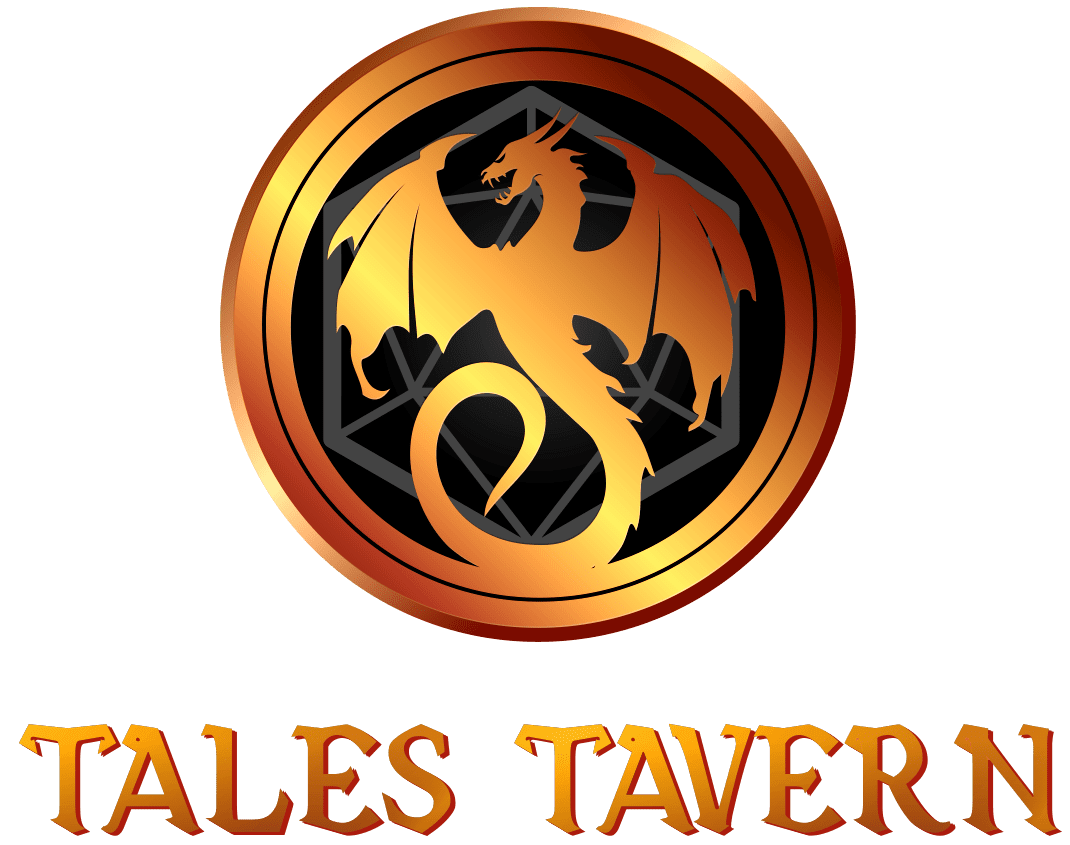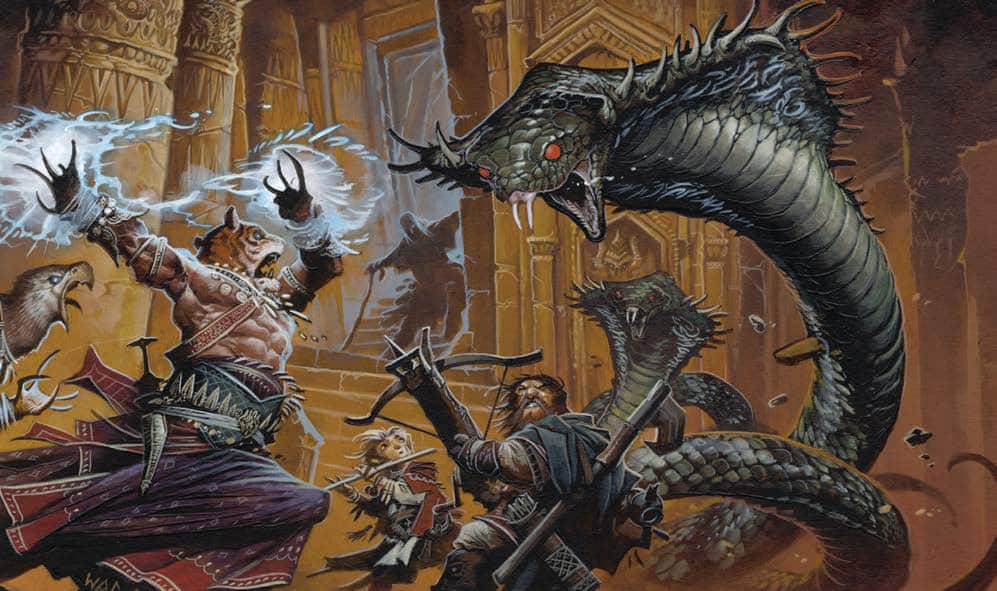Curse of the Crimson Throne Book 3: Escape from Old Korvosa Campaign
The queen’s madness grows. Her paranoia and anger blossom. Her newfound powers quicken, unlocked by her soul merging with a fragment of the great blue wyrm Kazavon. She sees Korvosa now as populated by two castes: slaves and enemies. The city, already weakened by anarchy after her husband’s death, now staggers in the aftershocks of an engineered plague. Korvosa’s defenders have either shut themselves away or are so exhausted from recent events that it is a simple matter for Queen Ileosa’s new army of Gray Maidens to establish martial law. Old Korvosa is the first of her victims, cut off and quarantined, left to die of its own internal strife. Yet in this decaying district languishes the city’s salvation—if it can only escape from Old Korvosa in time.
Korvosa was built on a foundation of evil. Although it remained sealed away in a hidden vault below the castle until just recently, the Kazavon’s fangs haven’t lain quiet over the centuries. The fragments of the dragon’s spirit lodged in these relics knew that someday they would be discovered and released. While inside the vault, his spirit could do little to influence the minds of the thousands that it felt, so agonizingly close, in the growing city above. Now and then, a particularly susceptible mind arose in Korvosa, one whose thoughts and emotions were, for whatever cruel twist of fate, more open to the lingering presence of the ancient dragon. As these minds slept, Kazavon could whisper to them, and in so doing he hoped to lure one into the castle to release him and become a vessel for his power.
Time and again, however, Kazavon’s whispers to these tortured, sensitive souls backfired. Instead of fostering a loyalty to his twisted agenda, he created only madness. Left to their own devices, these victims would have flourished as talented artists or poets, but with Kazavon’s influence, they became murderers or worse. Queen Ileosa’s discovery of Kazavon’s fangs was an unforeseen accident, one the dragon’s shattered spirit took advantage of immediately. He abandoned his current “projects” in the city, seven sensitive men and women with whom he had slowly been making strides. The loss of their muse was a tragedy for this group. Living out their days both comforted and horrified by Kazavon’s whispers, they had grown accustomed to his faint voice in their dreams. For six of the seven, the loss of that voice drove them to quietly kill themselves, becoming more nameless victims in the wake of the anarchy and the plague. Only one lives to this day—a moody but talented painter named Salvator Scream.
Born Salvator Bevery, this struggling young artist was kicked out of his home by his father, a devout Abadaran who found his son’s gruesome paintings to be sadistic and unpalatable. Seeking shelter with several of his artist friends who dwelled in a flat in Old Korvosa, Salvator swiftly found regular work creating backdrops and other paintings for Pilts Swastel, purveyor of all things grisly and vile for the city’s most notorious playhouse, Exemplary Execrables. It was at Pilts’s suggestion that Salvator changed his surname to “Scream,” since that helped Pilts market the man’s violent art even better.
Salvator Scream’s work drew many admiring eyes, and not just among the regulars at Exemplary Execrables. His work became a favorite of noble families and other prominent citizens, who found his subjects shocking but safely scandalous. Among these patrons was the seneschal of Castle Korvosa, Neolandus Kalepopolis. Neolandus was more interested in the artist than the art, and after attending a showing of “Tears of Abendego” at Exemplary Execrables (a performance he found distasteful at best), he met the young artist. The two formed a fast friendship, one of the few in Salvator’s life, and their meetings at various eateries to discuss art, history, and religion became a weekly event—an event that Kalepopolis, always a private man, kept very secret.
After Neolandus survived an attempt on his life by the Red Mantis and escaped the castle, wounded and poisoned, he fled to Salvator’s doorstep. With the aid of Salvator and his network of contacts in the Old Korvosan artistic underworld, Neolandus managed to both recover from his wounds and avoid the Red Mantis. Yet as things in Korvosa grew worse, and the assassins grew closer to discovering him, Neolandus realized he needed to find a new hiding place. Salvator had just the patron in mind—the Arkonas. Long a fan of Salvator’s grisly work, Glorio Arkona (who was, in fact, actually a rakshasa named Bahor) gracefully agreed to hide Neolandus in his estate as a favor to the artist. Of course, gaining control of the seneschal played perfectly into the Arkonas’ plans to upset the queen, for according to Korvosan law, only the seneschal can legally depose a corrupt monarch. Neolandus has become little more than a caged pet to the Arkonas, an insurance policy they’re waiting patiently to cash in while Old Korvosa grows more desperate.
Today, Old Korvosa is cut off. Quarantined and forgotten, the island has been left to fend for itself. The Arkonas have retained control over their manor grounds but the majority of Endrin Isle has fallen to the mob, which is increasingly under the subjugation of Pilts Swastel, now calling himself the Emperor of Old Korvosa. His influence over Old Korvosa grows by the week, and has recently “commissioned” Salvator Scream as his royal painter. The tortured artist is one of the only Korvosans who knows Neolandus suspects the truth behind Queen Ileosa’s madness and what must be done to stop it.
Maintaining such a secret is quite dangerous, especially because if this information spreads, the queen will spare nothing to see the seneschal dead, and might well burn Old Korvosa to the ground to do it.



